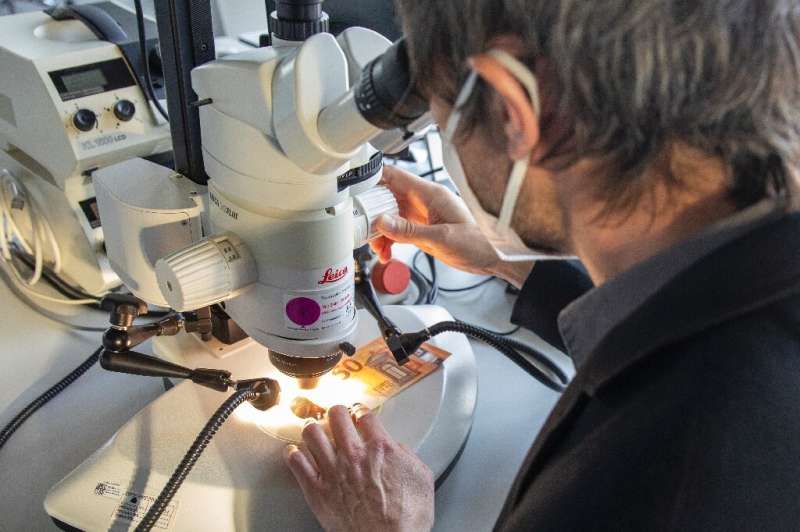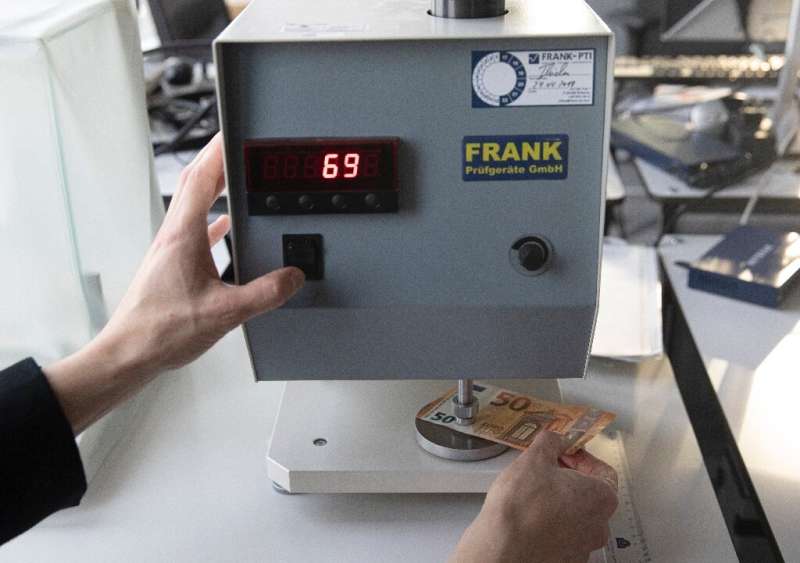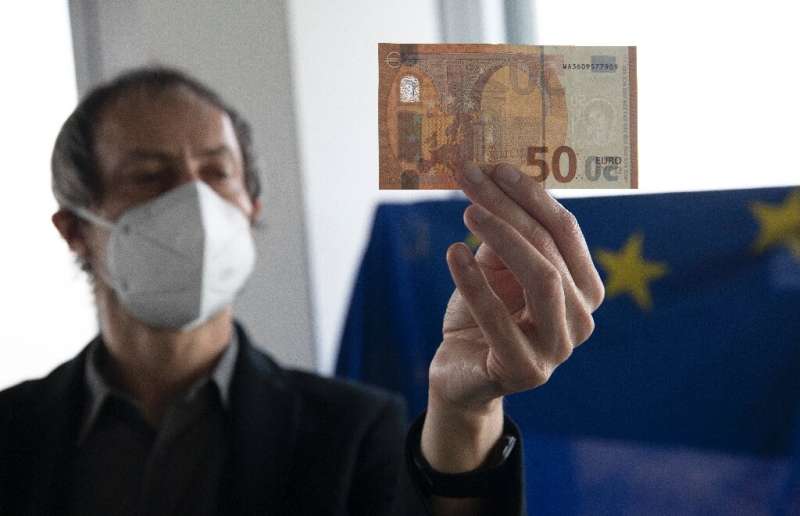Inside the ECB’s secret lab to sniff out fake euro bills

On the 23rd floor of the European Central Bank’s towering Frankfurt headquarters, on the other side of a security door, anti-counterfeiting experts are poring over some of the best fake banknotes in the eurozone.
The room, off limits to outsiders, at first glance recalls a high school science lab—an unusually well-equipped one.
Lined up on the workbenches are 3D microscopes, ultra-sensitive scales and special devices designed to detect around a dozen of the safety features embedded in genuine euro banknotes—and spot the forgeries.
The analysis done by the handful of specialists in the room helps the ECB keep up to date with the latest counterfeiting techniques, and hopefully stay a step ahead.
Twenty years after the launch of the single currency, the risk of a eurozone citizen holding a fake euro note is “very slim”, said Jean-Michel Grimal, head of the ECB’s currency development division.
And the chances have been getting slimmer by the year.
According to the ECB—responsible for issuing bills while the central banks of the 19 eurozone nations each produce their own coins—banknote counterfeiting fell to a historically low level in 2020.
Around 460,000 fake euro bills were taken out of circulation last year, an 18-percent drop on 2019.

By comparison, there are currently 27 billion genuine euro notes out there.
The safety of euro banknotes has contributed to the “strong trust” eurozone citizens have in the single currency, Grimal said, with recent surveys putting support for the euro at around 80 percent.
Helping police
The lab’s biggest treasure is a large iron cabinet that requires two people to open it, each only knowing part of the secret combination.
Inside is a trove of nearly 1,000 fake banknotes, from five- to 500-euro bills, that have been studied over the past two decades.
Every eurozone country has its own counterfeiting detection centre, but Frankfurt holds the most “interesting” examples because they are considered the best imitations, said Eric Languillat, one of the ECB’s counterfeiting experts.
The analysis done here also helps to give “a quantitative view of the (fake) notes circulating in Europe”, he said.

The findings are shared with police services like the EU police agency Europol to help them track down counterfeiting networks.
The ECB’s research and development teams, tasked with constantly improving the quality and security of euro bills, also feed off the lab’s discoveries.
“If we notice the counterfeiters using certain technological methods, the R&D teams will look at what they can put in place to counteract them,” said Grimal.
The ECB’s tampering-fighting efforts come at a price, requiring a sizable annual budget.
But the money spent “is a good investment compared to the cost of a counterfeiting crisis”, said Grimal.
‘Feel, look, tilt’
The Frankfurt analysts examine the bills into the smallest details.
On one computer screen, a genuine 20-euro note is blown up to nearly 70 times its size, revealing the tiny waves inside the “20” figure, resembling the ridges of a ploughed field, and quite a challenge to imitate.

Citizens don’t necessarily “have the instinct to look closely at notes,” said Languillat.
That’s why the ECB has for years encouraged the public to use the “feel, look, tilt” method to check that what they’re holding is the real thing—no microscope required.
Special printing ensures no other notes feel like euro notes, holding a bill up to the light reveals the watermark and security thread, while tilting it changes the hologram and colour-shifting images.
“If you look carefully at a banknote, the quality of a fake is generally pretty bad, it should be easy to spot,” he said.
© 2021 AFP
Citation:
Inside the ECB’s secret lab to sniff out fake euro bills (2021, December 29)
retrieved 29 December 2021
from https://techxplore.com/news/2021-12-ecb-secret-lab-fake-euro.html
This document is subject to copyright. Apart from any fair dealing for the purpose of private study or research, no
part may be reproduced without the written permission. The content is provided for information purposes only.
For all the latest Technology News Click Here
For the latest news and updates, follow us on Google News.

